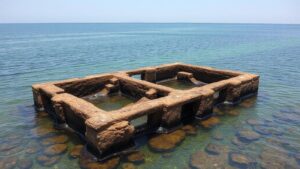Investigating the ancient method used to transport Easter Island’s Moai statues.
Investigating the Ancient Method Used to Transport Easter Island’s Moai Statues
Easter Island, known as Rapa Nui, is famous for its enigmatic Moai statues, which dot the landscape of this remote island in the Pacific Ocean. These colossal stone figures, carved between 1400 and 1650 CE, are not only a testament to the engineering skills of the island’s early inhabitants but also present a fascinating puzzle regarding how these statues were transported from the quarry to their ceremonial platforms, or Ahu. This article delves into the methods theorized by researchers and archaeologists for the transportation of these massive monoliths.
The Moai Statues and Their Significance
Standing up to 33 feet tall and weighing as much as 82 tons, the Moai statues are primarily made from volcanic tuff. Each statue represents the ancestors of the Rapa Nui people, and they were erected to honor and amplify the mana, or spiritual power, of these ancestral figures.
Location of the Quarry
The primary quarry for Moai statues is located at Rano Raraku, on the southeastern part of the island. Approximately 397 statues remain in various stages of completion at the quarry, highlighting the extent of this monumental undertaking.
Theories of Transportation
Several theories have emerged regarding the methods used to transport the Moai, reflecting a mix of ingenuity and resourcefulness that characterizes the Rapa Nui culture. Below are some of the predominant theories:
- Rollers and Logs: One of the earliest theories suggested that the Moai were rolled on cylindrical logs. This method would have required immense logistical coordination and labor.
- Sliding Method: Some researchers believe the statues were slid on a base of wet grasses or other materials to reduce friction. This theory gained traction when tests showed it could be possible to move heavy objects using this method.
- Walking Method: A groundbreaking 2020 study suggested that the Moai could be walked upright by a team of people using ropes. This approach would require coordinated movements to create an illusion of walking, reducing the risk of damage during transport.
Evidence Supporting the Theories
To validate these theories, researchers have conducted various experiments. For example, a 2012 expedition replicated the sliding method by moving a small Moai using water and friction-reducing materials. The result demonstrated that a group of individuals could, in fact, move a statue weighing hundreds of pounds comparably easily.
Also, the 2020 walking experiment showcased how precise coordination among a group of people could transport a statue without significant damage. This method not only invites a feasible explanation but also reflects the social organization of the Rapa Nui, emphasizing collective effort in task execution.
Real-World Implications of the Findings
The exploration of these transportation methods serves as an important case study in logistics and engineering, particularly in challenging environments. findings not only provide insight into the capabilities of the Rapa Nui but also resonate with modern-day applications, such as:
- The importance of teamwork and planning in large-scale projects.
- Innovative solutions to move heavy objects in resource-limited scenarios.
Conclusion
The ancient methods of transporting the Moai statues on Easter Island remain a captivating topic for historians and archaeologists. Whether through rolling, sliding, or a sophisticated walking method, these techniques reflect not just an engineering marvel but also a glimpse into the communal spirit and problem-solving capabilities of the Rapa Nui people. As research continues, the Moai statues remind us of the ingenuity that can emerge from the interplay of culture, tradition, and necessity.



